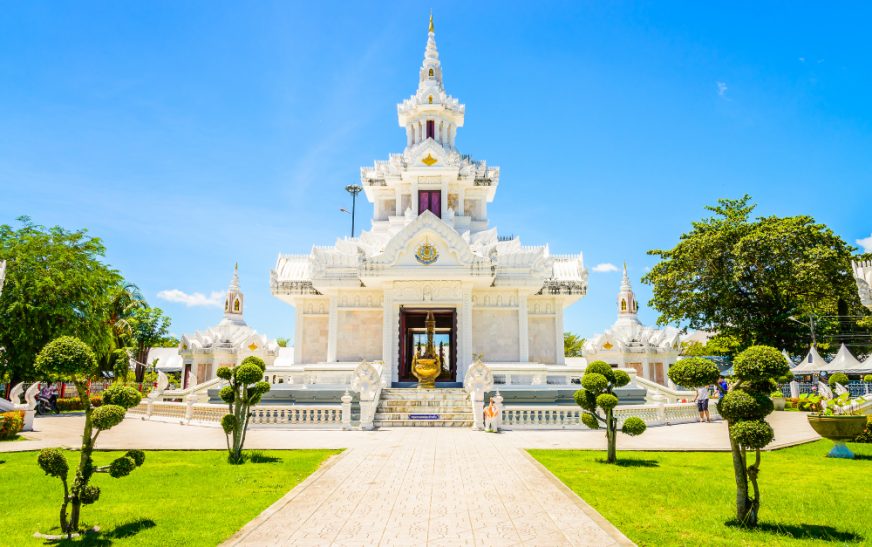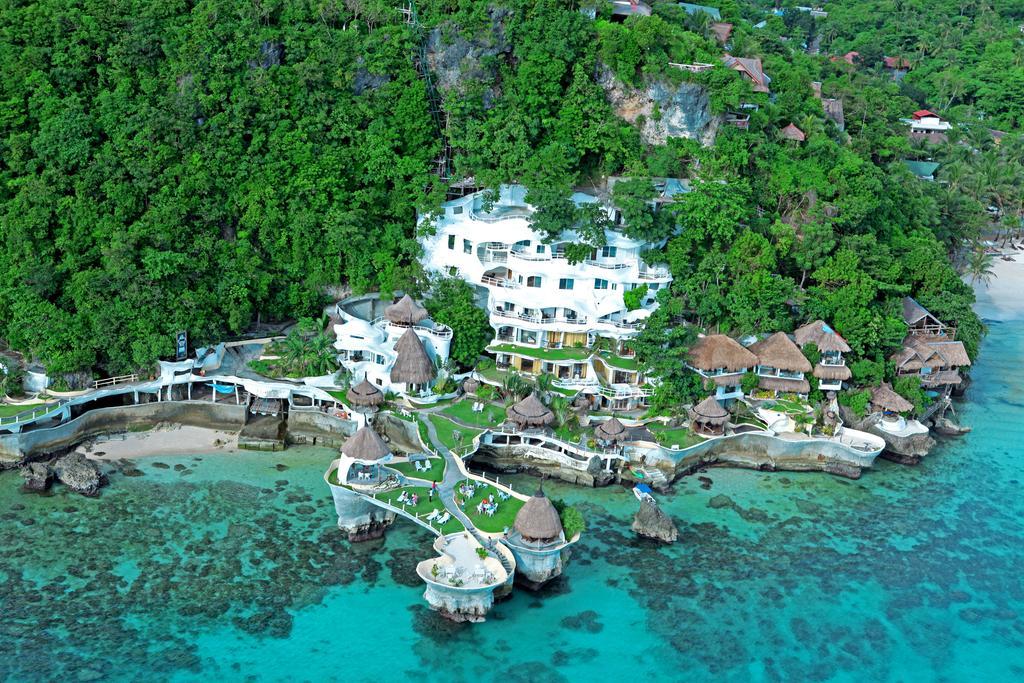Nestled in the heart of Bali, Indonesia, the Goa Gajah Caves, also known as the Elephant Cave, offer a journey into a mystical world rich in history, spirituality, and architectural marvels. Dating back to the 9th century, this ancient site remains one of Bali’s most intriguing cultural landmarks. Carved into the rock face, the caves serve as both a sanctuary for meditation and a place of profound historical importance. For centuries, visitors have marvelled at its intricate carvings, mysterious chambers, and symbolic relics. In this article, we will delve into the 10 mystical secrets that surround the Goa Gajah Caves, offering insights into its religious, cultural, and architectural significance.
The Mysterious Entrance of Goa Gajah Caves
The entrance to Goa Gajah Caves is perhaps one of its most famous features. As you approach the cave, you are greeted by an enormous demonic face, carved intricately into the stone. This carving is believed to represent a guardian meant to ward off evil spirits. The menacing expression, wide eyes, and fanged mouth invoke both awe and wonder. Some believe that the face could be a depiction of Boma, a Balinese protective figure, while others suggest it may symbolise a Hindu deity. The precise origin of the face remains a mystery, sparking debates among historians and archaeologists. However, one thing is certain: this ominous guardian adds to the spiritual aura of the cave.
The Ancient Meditation Chambers of Goa Gajah Caves
Upon entering the Goa Gajah Caves, one is transported into a world of peace and reflection. The interior of the cave features several meditation chambers, believed to have been used by Hindu and Buddhist monks. These chambers were specifically designed to provide a tranquil environment for deep meditation and spiritual growth. The walls of these chambers are lined with carvings and symbols that are meant to enhance the meditative experience. The alignment of the chambers with celestial bodies has led some to believe that the caves were used for astrological rituals, adding yet another layer of mystery.
The Sacred Fusion of Religions at Goa Gajah Caves
One of the most unique aspects of Goa Gajah Caves is its representation of both Hindu and Buddhist iconography. The site itself predates the arrival of Islam in Indonesia, showcasing a fascinating blend of these two major religions. Statues of the Hindu deity Ganesh, the elephant-headed god, can be found inside the cave, while the nearby courtyards and pools house remnants of Buddhist stupas and carvings. This fusion of religious influences is a testament to the harmonious coexistence of different faiths in Bali’s history. The fact that both religions are represented at such an ancient site speaks to its deep spiritual significance.
The Mystery Behind the Name of Goa Gajah Caves
Despite being called the Goa Gajah Caves—with “gajah” meaning “elephant” in Indonesian—there are no actual elephants at the site. So where did the name come from? The mystery lies in the interpretation of ancient texts and oral traditions. Some scholars suggest that the name derives from the presence of the statue of Ganesh, the Hindu god with an elephant’s head, inside the cave. Others believe that the name may have been inspired by the nearby river, which was once referred to as the “Elephant River.” However, the exact origins of the name remain shrouded in mystery, adding another enigma to the rich tapestry of the site.
The Enigmatic Water Temple Nearby
Just a stone’s throw away from the caves lies an ancient water temple, known as Pura Penataran Sasih. This sacred site is dedicated to the Hindu water goddess and features a series of intricately carved fountains and pools that once served as bathing areas for priests and worshippers. Visitors are often captivated by the serenity and beauty of the temple’s surroundings, where lush greenery meets the gentle sounds of flowing water. The temple is not only a place of worship but also a significant historical landmark, representing the Balinese reverence for water as a life-giving element. Exploring this water temple offers a deeper understanding of the spiritual practices intertwined with the caves.
Intricate Rock Carvings and Symbolism
One of the most striking features of the site is its intricate rock carvings, which depict various deities, animals, and mythological scenes. Each carving serves a purpose, telling stories of Balinese culture and spirituality. The detailed craftsmanship reflects the skill and devotion of the artisans who created them. Some carvings are thought to symbolise protection, while others represent prosperity and harmony. As visitors wander through the cave’s chambers, they can witness firsthand how these carvings contribute to the overall spiritual atmosphere. Understanding the symbolism behind these artworks enhances the visitor experience, making it a journey not just through physical space, but also through the rich narratives of Balinese heritage.
Historical Significance in Balinese Culture
The caves are more than just a historical site; they are a testament to the rich cultural tapestry of Bali. Dating back to the 9th century, the caves were used as a place for meditation and worship by both Hindus and Buddhists. The historical significance of the site can be traced through various artefacts and inscriptions found nearby, indicating its use as a pilgrimage destination. Over the centuries, the site has witnessed the evolution of religious practices in Bali, reflecting changes in belief systems and cultural exchanges. Understanding the historical context of the caves allows visitors to appreciate their importance as a cultural landmark that has stood the test of time.
The Journey Through Time: A Visitor’s Perspective
Walking through the caves offers visitors a unique opportunity to experience a journey through time. The cool, damp air and the flickering light from candles create an ethereal atmosphere, inviting contemplation and reflection. As one explores the various chambers, each step feels like a passage through centuries of history. The echoes of chanting monks and the whispers of worshippers resonate within the walls, enhancing the spiritual ambiance. Many visitors describe their experience as transformative, often leaving with a sense of peace and connection to the ancient traditions that permeate the site. This immersive journey is not just about observing; it’s about feeling the essence of a sacred space that has inspired countless souls.
The Spiritual Energy of the Site
Many visitors report feeling a palpable spiritual energy while exploring the caves. This energy is attributed to the site’s long history as a place of worship and meditation. Practitioners of yoga and meditation often flock to the caves to tap into this energy, using the tranquil environment to enhance their spiritual practices. The site is also a favoured location for ceremonies and rituals, further solidifying its status as a spiritual haven. The connection between the natural surroundings and the sacred space creates a harmonious environment conducive to introspection and enlightenment. Understanding the spiritual significance of the caves enriches the experience, inviting visitors to engage with the site on a deeper level.
Tips for an Unforgettable Visit
To make the most of your visit to this ancient site, consider these helpful tips. First, arrive early in the morning to avoid crowds and fully immerse yourself in the serene atmosphere. Wear comfortable shoes, as the terrain can be uneven, and bring a flashlight to explore the darker chambers. Respect the sacredness of the site by maintaining a quiet demeanour and observing local customs. Don’t forget to bring a camera to capture the stunning carvings and lush surroundings, but remember to ask for permission before taking photos of local worshippers.
Conclusion
The Goa Gajah Caves offer a unique glimpse into Bali’s rich cultural and spiritual heritage. From its mysterious entrance to the sacred bathing pools, the cave is a treasure trove of religious symbolism, artistic craftsmanship, and mystical wonder. The fusion of Hindu and Buddhist elements adds to the depth of the site, making it a place of both historical and spiritual significance. Whether you are drawn to its ancient meditation chambers or intrigued by the unanswered questions that surround it, the Goa Gajah Caves are a must-visit for anyone looking to explore Bali’s hidden gems.
FAQs
1. What is the significance of the demonic face at the entrance of Goa Gajah Caves?
The demonic face is believed to represent a guardian meant to ward off evil spirits, though its exact origin remains unclear.
2. Are there actual elephants at Goa Gajah Caves?
No, there are no elephants at the site. The name may be linked to the nearby “Elephant River” or the statue of Ganesh, the Hindu god with an elephant head.
3. What can visitors expect to see inside the Goa Gajah Caves?
Inside the caves, visitors can explore a series of chambers featuring intricate rock carvings, meditation areas, and symbolic artwork. There are also natural formations that contribute to the site’s mystical atmosphere.
4. Is it safe for visitors to explore the Goa Gajah Caves?
Yes, the site is generally safe for visitors. However, caution is advised due to uneven terrain and low lighting in certain areas. It’s recommended to wear sturdy shoes and be mindful of your surroundings.
5. What is the best time to visit this site?
The best time to visit is early in the morning or late afternoon when the weather is cooler and the light is softer. Visiting during these times allows for a more serene experience, free from large crowds.
Also read: The White Temple: 15 Fascinating Myths and Legends










